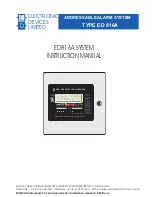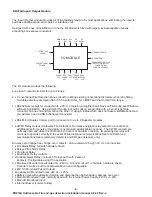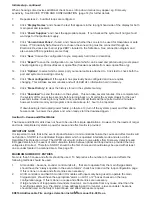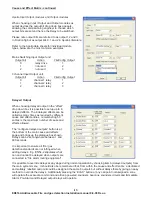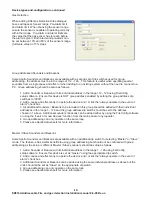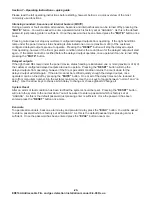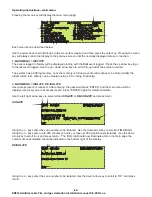
-7-
Section 2 - System design guidelines
LOOP LENGTHS
LOOP LOADING - Maximum number of addresses
LOOP LOADING - Short circuit isolators
LOOP CABLE SELECTION
LOOP CABLE RESISTANCE
The maximum permitted loop length can be determined using Apollo’s loop calculator, available free from EDL.
Remember to include the vertical distances when looking at plan drawings and also ensure cable capacitance is
within the panels specification.
The maximum number of addresses is 126 per loop. System designers should avoid fully loading loops. The
optimum number of addresses per loop is approximately 90 to 100, this ensures the system is operating well
within its capacity and allows the customer flexibility in the future to add additional devices.
Short circuit isolators should be fitted with no more than 20 detectors between isolators. No more than 10
detectors (or equivalent load) between the panel and the first isolator and no more than 10 detectors (or
equivalent load) between the panel and last isolator. Ideally the first and last items fitted to a loop should be
isolators.
Isolators should always be fitted at zone boundaries and it is good practice to reduce the number of times loop
wiring enters and leaves the same zone. A single fault on a loop should not remove protection from an area
greater than a single zone.
Two simultaneous faults on a loop should not remove protection from an area greater than 10,000 sq m . This
requirement limits the total floor area covered by one loop to 10,000 sq m regardless of the number of
detectors.
Isolators are available as standalone or built in to detector bases and integrated in to Apollo interface modules .
The additional cost of the built in isolators is small compared to the non isolated bases or interface units
therefore as many isolators should be fitted as possible.
Short circuit isolators do not use up addresses and there is no limit to the number of isolators fitted.
Each loop card is fitted with two onboard short circuit isolators, one for loop out and one for loop return,
protecting the wiring between the panel and first and last isolator.
The cable must be a suitable type e.g. FireTuf, FP200 or equivalent and must have the following characteristics:
1.
The cable must be 2 core with drain core.
2.
Loop out and loop in should never be run within the same cable.
3.
Multicore cable should never be used.
The maximum permissible resistance per core is 12.8 Ohms at maximum load (300mA). Loops with lower
loads can accept higher cable resistance, however it is good practice to consider the maximum load at the
design stage thus allowing for future expansion.
Core diameter
Typical resistance (FP200 / FireTuf)
1.0mm
18.1 Ohms/Km/Core
1.5mm
12.1 Ohms/Km/Core
2.5mm
7.4 Ohms/Km/Core
4.0mm
4.6 Ohms/Km/Core
ED816A Addressable Fire and gas detection Installation manual 8-9-08 Rev-a

